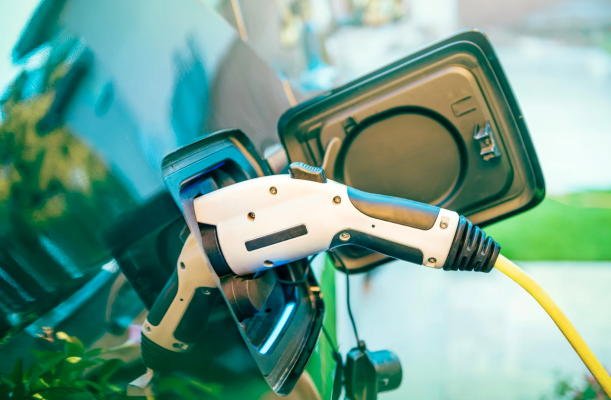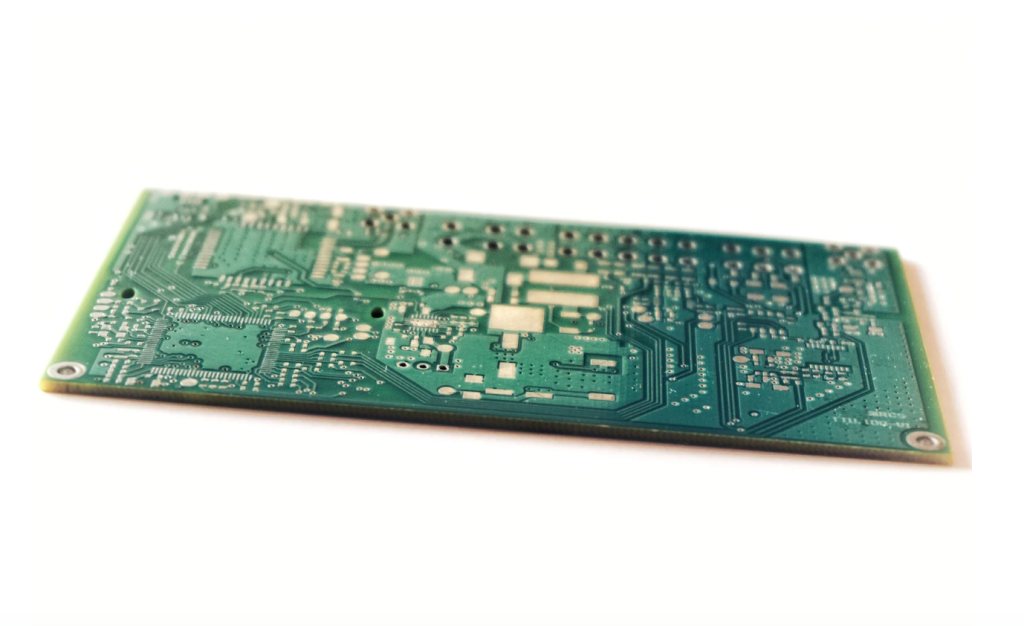
- October 22 2025
The electric vehicle revolution is triggering a complete reimagining of automotive electronics. At the center of this transformation lies an unsung hero: the printed circuit board (PCB).
Modern EVs contain three times more PCBs than their internal combustion counterparts – 150+ boards in some models versus just 50 in traditional cars. This explosion isn’t simply about quantity; it represents a fundamental shift in vehicle architecture. Where combustion vehicles used electronics primarily for infotainment and basic controls, EVs rely on PCBs for mission-critical functions like:
- Precision battery management (Monitoring 7,000+ battery cells)
- High-voltage power conversion (Handling up to 800V systems)
- Autonomous driving systems (Processing sensor data in real-time)
Technological Forces Driving This Change
Electrification Demands Robust Power Electronics: EV power trains operate at voltages that would fry conventional automotive PCBs. This requires entirely new approaches to board materials and layout.
Software-Defined Vehicles Need More Compute: Advanced driver assistance systems (ADAS) and over-the-air updates turn cars into rolling data centers – all running on specialized PCBs.
Every Watt Matters: With range anxiety still a concern, EV makers obsess over efficiency. A better PCB design can add miles to a charge.
We’re not just making more PCBs – we’re reinventing them for an automotive landscape where electronics, not mechanics, define performance. The global EV PCB market is projected to grow 18% annually through 2030. As legacy automakers scramble to electrify, the companies that master EV-grade PCB design will hold a critical advantage.
This is an engineering challenge and a strategic inflection point where traditional automotive supply chains are colliding with high-tech electronics manufacturing.
The Four Critical PCB Types Powering Modern EVs

Electric vehicles demand a new breed of printed circuit boards, each engineered for specific challenges that go far beyond traditional automotive requirements. These specialized PCBs form the nervous system of EVs, managing everything from kilowatt-level power delivery to real-time sensor processing. Their design requirements reveal how profoundly electrification has transformed automotive electronics.
Battery Management Systems
Battery Management System (BMS) PCBs represent perhaps the most mission-critical innovation. These circuits continuously monitor and balance hundreds or even thousands of individual battery cells, operating in an environment that would overwhelm conventional automotive electronics. Modern BMS boards employ heavy copper layers (up to 20 oz) to handle high currents, while advanced thermal management materials dissipate heat from tightly packed components. A single design flaw here can cascade into thermal runaway, which makes reliability non-negotiable.
Power Conversion
Power conversion PCBs face equally demanding conditions. EVs essentially function as rolling power plants, requiring multiple energy transformations between charging systems, battery packs, and drive motors. The best designs now incorporate ceramic substrates and metal-core boards to manage thermal stresses from 800V architectures. These boards serve as power distribution hubs handling currents that would melt typical automotive wiring.
Motor Control
Motor control PCBs showcase the precision engineering behind EV performance. Operating at switching frequencies that can exceed 20kHz, these boards must maintain perfect synchronization while withstanding constant vibration. The shift to wide-bandgap semiconductors like silicon carbide (SiC) has forced redesigns of everything from gate driver circuits to thermal relief patterns. What was once a relatively straightforward control board has become a high-speed, high-reliability electronic module.
Driver Assistance and Infotainment
The ADAS and infotainment PCBs represent the “brain” of modern EVs. These high-density interconnect (HDI) boards pack more computing power than some data center equipment, processing inputs from dozens of sensors while managing multiple high-speed data buses. Their layer counts have ballooned to accommodate millimeter-wave radar and lidar systems, with careful attention to signal integrity in an electrically noisy automotive environment. This category demonstrates most clearly how EVs have become more like consumer electronics, just with far stricter reliability requirements.
The Manufacturing Challenges of EV PCBs
The shift to electric vehicles is also forcing manufacturers to rethink production itself. EV circuit boards demand tighter tolerances, more advanced materials, and unprecedented reliability standards, creating a perfect storm of technical and logistical challenges.
Thermal management sits at the top of the list. Unlike conventional automotive electronics that operate at relatively stable temperatures, EV power electronics endure extreme thermal cycling – from sub-zero winter starts to rapid charging at 150kW+. Traditional FR-4 laminates struggle under these conditions, pushing manufacturers toward high-temperature materials like polyimide and ceramic-filled PTFE. These substrates maintain stability at temperatures where FR-4 would delaminate, but they come with tradeoffs: higher costs, more difficult drilling processes, and stricter handling requirements.
Learn More – Understanding PCB Materials: FR4, Polymide and More
High-voltage operation introduces another layer of complexity. Where 12V systems could tolerate minimal creepage distances, 800V EV architectures demand careful spacing and insulation. Some manufacturers now use specialized potting compounds and conformal coatings to prevent arcing, while others adopt hybrid constructions with built-in isolation barriers. The challenge grows when designers must balance these safety requirements against the simultaneous push for miniaturization – high-voltage PCBs can’t simply be made larger to accommodate spacing rules when every cubic millimeter counts.
Reliability expectations dwarf those of consumer or even traditional automotive electronics. An EV battery management PCB must operate flawlessly for 15+ years while withstanding vibration profiles that would shake apart most electronics. This drives adoption of automotive-specific qualification standards like AEC-Q100 and production techniques like automated optical inspection (AOI) for 100% coverage. The shift to zero-defect manufacturing isn’t optional when a single PCB failure could strand a vehicle or, worse, create a safety hazard.
Supply chain pressures compound these technical hurdles. The explosive growth in EV production has created shortages of specialty PCB materials, with lead times for certain high-performance substrates stretching past six months. At the same time, manufacturers face intense cost pressure as automakers seek to reduce EV prices – a difficult balance when using premium materials and additional processing steps. Those who navigate these challenges successfully won’t just supply components; they’ll enable the next phase of automotive electrification.
Emerging Technologies Reshaping EV PCB Production
The challenges facing EV PCB manufacturers are formidable, but the industry isn’t standing still. A wave of technological advancements is redefining what’s possible in automotive electronics, enabling solutions that would have been unthinkable just five years ago.
Material science breakthroughs are leading the charge. Researchers are developing next-generation substrates that combine the thermal performance of ceramics with the manufacturability of traditional laminates. One promising approach involves nano-engineered dielectric materials that offer superior heat dissipation while maintaining high voltage isolation. These materials could finally resolve the thermal management paradox of how to handle increasing power densities without compromising reliability or form factor.
Additive manufacturing techniques are beginning to supplement conventional PCB fabrication for specialized applications. While still not viable for mass production, 3D-printed circuit structures show particular promise for prototyping and low-volume runs of complex, non-planar boards. Some manufacturers are experimenting with fully additive processes that deposit conductive traces directly onto curved surfaces – a potential game-changer for space-constrained automotive layouts where traditional flat PCBs force packaging compromises.
Artificial intelligence is making inroads into quality control and design optimization. Machine learning algorithms can now predict potential failure points in PCB layouts by analyzing thousands of previous designs and field failure reports. This goes beyond traditional design rule checks, identifying subtle interactions between thermal stress, vibration modes, and material properties that human engineers might miss. In production, AI-powered optical inspection systems are achieving defect detection rates that surpass human capabilities while reducing false rejections.
Perhaps most significantly, the industry is moving toward more integrated solutions. Instead of treating PCBs as separate components, leading manufacturers are co-developing them with the systems they power – working hand-in-hand with battery, motor, and ADAS designers from the initial concept phase. This systems-level approach is yielding innovations like embedded power electronics, where high-current components are integrated directly into the board structure rather than being mounted on its surface.
These advancements aren’t happening in isolation. They’re converging to enable a new generation of EV electronics that will be more compact, more reliable, and more cost-effective than today’s solutions. The companies that successfully harness these technologies will set the standard for the industry’s next phase of growth.
The Future of PCBs in Next-Generation EVs
The evolution of PCB technology is about to accelerate – driven by three seismic shifts in electric vehicle design that will reshape automotive electronics over the next decade.
Centralized E/E Architectures Demand Radical PCB Redesigns
Tesla’s “gigacasting” revolution extends beyond metal frames – their move to zonal architectures consolidates dozens of ECUs into domain controllers. This isn’t just a packaging change. It requires:
- High-speed substrate materials (Megatrend: Low-loss dielectrics for 25+ Gbps automotive Ethernet)
- Embedded passives/actives (TDK’s PCB-embedded capacitors already enable 30% space savings)
- 3D interconnect technologies (Tesla’s patent filings hint at stacked PCB assemblies)
800V+ Systems Rewrite Power Electronics Rules
Porsche’s Taycan proved 800V architectures work – now everyone’s following. This triggers:
- GaN/SiC adoption (Wolfspeed’s 1200V SiC modules demand new PCB thermal strategies)
- Integrated cooling solutions (VW’s patent shows liquid-cooled PCB sandwiches)
- Safety innovations (DuPont’s new isolator materials prevent dendrite growth at high voltages)
Autonomous Driving Creates “Server-Grade” Automotive PCBs
NVIDIA’s Thor SoC (2000 TOPS) can’t run on traditional auto PCBs. The solution?
- Optical interposers (Ayar Labs’ in-package optics may replace copper traces)
- Chiplet integration (AMD’s automotive division is adapting data center packaging)
- Self-healing materials (Nissan’s research into conductive polymers that repair cracks
We’re witnessing the birth of a new PCB category – automotive-grade boards with data center performance and aerospace reliability. And whether your working on the cutting edge or with existing EV systems, Microchip USA can deliver the custom PCBs you need for your next project. With industry-leading quality control and world-class customer service, we deliver the parts you need when you need them. Contact us to request a quote today!